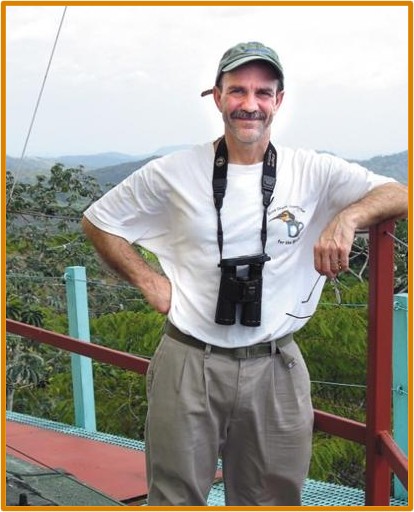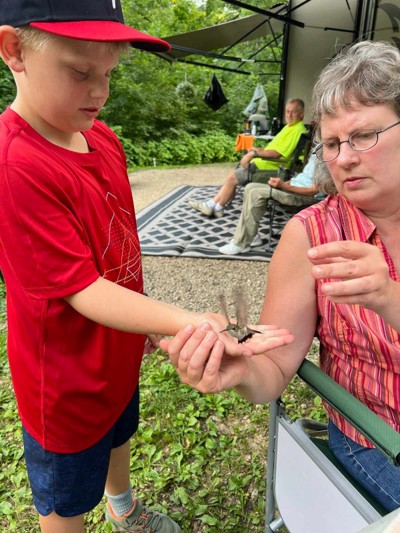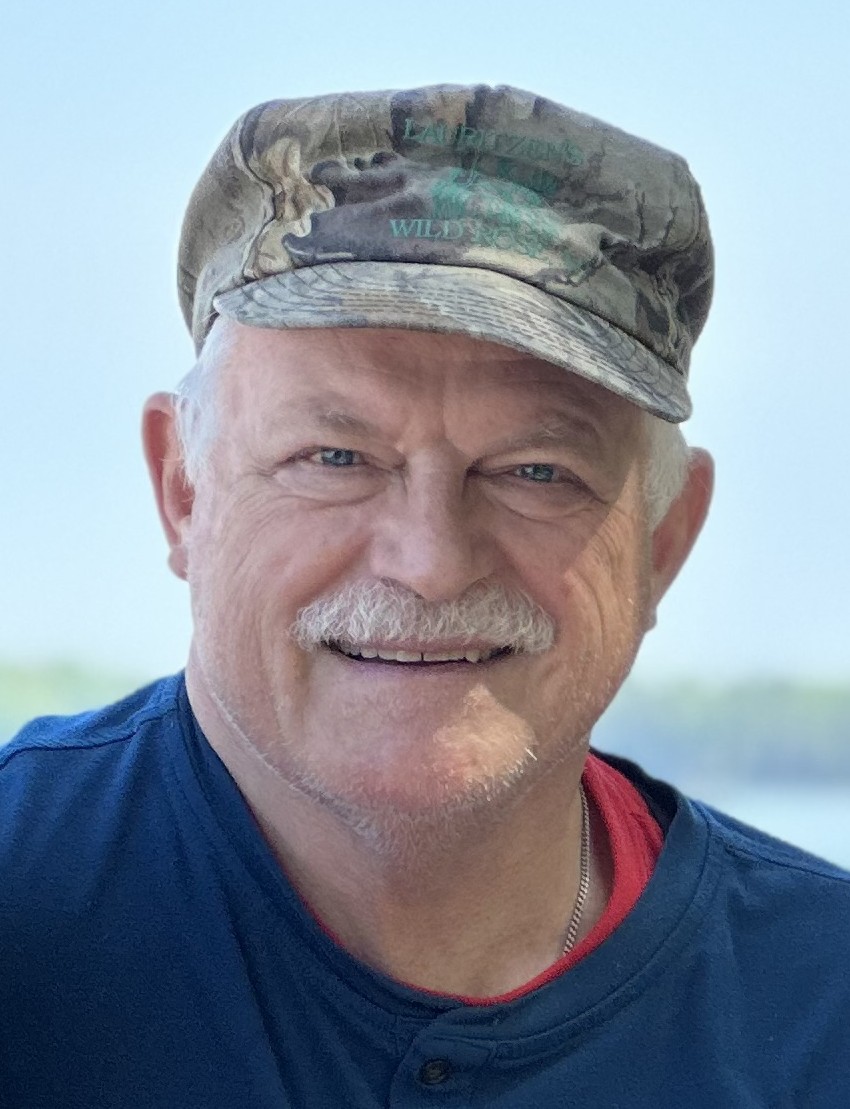The Noel J. Cutright Conservation Award was initiated in 2005 as the Green Passenger Pigeon Award. In 2014 the name was changed to honor one of Wisconsin's premier bird conservationists. Recipients may be an individual/group/organization that made contributions in the following:
- working on behalf of endangered, threatened, and/or common species
- promoting the establishment, management, and protection of bird habitat
- educating the public on bird conservation issues
Current year recipients are posted below. To see a list of past recipients, scroll past the current recipients.
2025 Noel J. Cutright Award Recipients (See the announcement here)

Craig Thompson
Craig Thompson has worked for the DNR for over thirty years as a conservation biologist, dedicating much of his career to migratory bird conservation. He has chaired the International Committee of the Wisconsin Bird Conservation Initiative. Presently he is Chief of Program Integration for the DNR's Natural Heritage Conservation Program, which promotes the establishment, protection and management of the state's Natural Areas. Craig also travels extensively to Central and South America to promote the protection of natural areas where many of Wisconsin's Neotropical migrants go to winter, leading multiple ecotour fundraising trips to these areas with the purpose of purchasing land for conservation. He is a wonderful speaker and has presented to many organizations though out the state promoting the importance of bird conservation. His passion and hard work have a huge impact on birds in Wisconsin.

Mickey O’Connor
Michelene (Mickey) O'Connor received her songbird banding permit in 2001 after training with Andy Larsen at Riveredge Nature Center and began a banding station at the Milwaukee County Zoo that year, where she is an Avian zookeeper. In 2013, Noel Cutright, citing lack of hummingbird data for Wisconsin, asked Mickey to train and be certified as a hummingbird bander. Off she went to West Virginia for intensive training with Bob Sargent, founder of the Hummer/Bird study Group. Mickey was the first and still only one of two permitted hummingbird banders in the state of Wisconsin. While Ruby-throated Hummingbirds are our most common hummer, there are instances of Anna's and Rufous Hummingbirds migrating through Wisconsin. When informed of a sighting, Mickey ventures around the state to band these rare visitors, contributing important data documenting their shifting patterns and adaptions to change. The abundant Ruby-throated Hummingbird data she's collected in successive years have demonstrated these birds' remarkable philopatry, with multiple recaptures at the same sites documented over years. In her position as Avian keeper at the Milwaukee County Zoo, Mickey has been instrumental in bird conservation and related education efforts at the Zoo. She has also developed numerous connections to bird conservation groups outside the U.S., leading trips to Costa Rica, Ecuador, Thailand, and Madagascar where participants learn about and provide funds for important projects that help birds, including habitat preservation for some of our migrating species. Mickey has also served as WSO treasurer for several years.

Tom Prestby
Tom Prestby lives his life very much in line with WSO’s mission “to promote the enjoyment, study and conservation of Wisconsin’s birds.” He began his career working for the Wisconsin DNR and on MANY projects. He helped pilot Marshland Surveys and trained volunteer observers. He was a crew leader for Boreal Bird Surveys and conducted old growth forest point counts. He also mapped land cover in field and GIS to inform Grassland Bird Conservation Area mapping. He volunteers for the DNR’s Kirtland’s Warbler Survey, Owl Monitoring Survey, and Nightjar Survey. During grad school at UW Green Bay Tom focused on the shorebirds found in Lower Green Bay, gathering baseline data for shorebirds and terns at the Cat Island Restoration Project, discovering the first recorded successfully breeding Piping Plovers on Lower Green Bay. Tom worked for GEI Consultants from 2017 to 2021 as the Threatened/Endangered Species expert, helping clients avoid impacts on rare bird species in Wisconsin. He is currently working as the Conservation Manager for Great Lakes Audubon. He manages large wetland restoration projects in Allouez Bay and the west shore of Green Bay to restore habitat targeting marsh birds including rails, bitterns and Pied-billed Grebes. He also oversees “Audubon Conservation Ranching” in Wisconsin, working with beef producers to implement bird-friendly grassland management practices on their lands. Tom chairs the Important Bird Area (IBA) Committee for the Wisconsin Bird Conservation Partnership (WBCP), helping deliver bird conservation projects to priority IBAs. He coordinates Piping Plover monitoring of Lower Green Bay population with USFWS, managing a team of 20+ crew/volunteers who monitor this species April-August each year. Tom is a major contributor to the Wisconsin Breeding Bird Atlas II and a Wisconsin eBird administrator since eBird’s inception in 2007. He’s been a team captain for the Great Wisconsin Birdathon, raising more than $15,000 for the NRF Bird Protection Fund and a field trip leader for NRF, raising additional funds for conservation. He is a current member of the Northeastern Wisconsin Bird Alliance Board of Directors and a former member of the Lake Michigan Bird Observatory Board of Directors. Additionally, Tom has served on the WSO Records Committee for 14 years, conducts three Breeding Bird Surveys for the U.S.Geological Survey (USGS) and at least four Christmas Bird Counts for National Audubon.

Randy Jurewicz
Randle (“Randy”) Jurewicz served as the foundational leader of the most significant endangered and threatened bird conservation success stories in Wisconsin. Beginning in 1978, Randy embarked on a 32-year career as the WDNR’s first “conservation biologist” within what was originally called the Office of Endangered and Nongame Species, then in 1982 as the first Section Chief of the WDNR’s Bureau of Endangered Resources (now Bureau of Natural Heritage Conservation). In 1983, he experienced another first—the Wisconsin Legislature’s passing of the Endangered Resources Tax Checkoff (Endangered Resources Fund), adeptly utilizing key funds from the tax checkoff over the ensuing decades to oversee state recovery plans and programs, working with private, institutional, business, and governmental partners, focusing on the recovery and conservation of the Bald Eagle, Osprey, Peregrine Falcon, Cooper’s Hawk, Double-crested Cormorant, Trumpeter Swan, Piping Plover, and Common Tern. He also directed staff to write and undertake recovery or management plans for, and support research on the Red-shouldered Hawk, Great Egret, Forster’s Tern, Black Tern, Caspian Tern, Loggerhead Shrike, and Barn Owl, provide next boxes for the Prothonotary Warbler, and support the International Crane Foundation in Sandhill Crane and Whooping Crane monitoring and restoration initiatives. Perhaps most notable among his achievements was the very public recovery and delisting of the Bald Eagle, Osprey, Cooper’s Hawk, Double-crested Cormorant, and Trumpeter Swan. Randy spearheaded the successful Osprey and Eagle management efforts, as well as Cooper’s Hawk and Double-crested Cormorant. Commonly observed by the public year-round, the Bald Eagle’s recovery is celebrated annually during the second week of January by an event Randy first organized in 1983 with the Ferry Bluff Eagle Council – Bald Eagle Watching Days. Perhaps the crème de la crème of Randy’s endangered and threatened bird recovery/restoration achievements was the masterful oversight of the Wisconsin Trumpeter Swan Recovery Program, beginning in 1987. Working with a national, state, and tribal team that included the U.S. Fish and Wildlife Service in Alaska, Michigan and Minnesota DNRs, WDNR wildlife managers and technicians, University of Wisconsin-Madison, Milwaukee County Zoo, Zoological Society of Milwaukee County, Bad River Band of the Lake Superior Chippewa, The Trumpeter Swan Society, Natural Resources Foundation of Wisconsin, Society for Tympanuchus Cupido Pinnatus, General Electric Medical Systems, BP Naperville Research Center, and the Windway Capital Corporation and the late Terry and Mary Kohler—who flew Randy and WDNR staff to Alaska to collect 385 Alaskan swan eggs during 1989-1997—and several other private groups, businesses, and organizations, the restored population flourished and the bird was delisted in 2009. In 2024, the Wisconsin Trumpeter Swan Population estimate stood at 14,781 individuals—a far distant cry from the state’s recovery goal of at least 20 breeding and migratory pairs, and one of the greatest bird conservation success stories in the state’s history.
Past Recipients
|
Bryan Lenz Shawn Graff Joel Trick Brand Smith |
2024 |
|
Paul Smith Pat Ready Al Sherkow |
2023 |
|
Janet Eschenbauch Amber Eschenbauch |
2022 |
|
Dick Nikolai Charlie Luthin |
2021 |
|
Gene Jacobs John Jacobs Ken Lange Mike Mossman |
2020 |
|
Brian Russart Mark Martin Sue Foote-Martin |
2019 |
| Friends of Grant Park | 2018 |
|
Karen Etter Hale Tom Hauge |
2017 |
| David Sample | 2016 |
| Kent Hall | 2015 |
| Greg Septon | 2014 |
| Marge Gibson | 2013 |
| Andy Paulios | 2012 |
|
Eric Howe Harold Kruse |
2010 |
| WDNR Bureau of Endangered Resources | 2007 |
|
Noel Cutright International Crane Foundation |
2005 |

